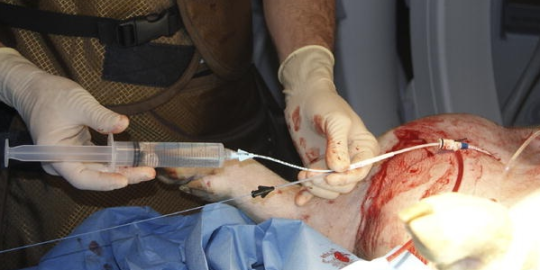Technically, REBOA is the acronym for Resuscitative Endovascular Balloon Occlusion of the Aorta. It is a relatively new tool in our armamentarium for use in patients with uncontrolled hemorrhage. Essentially, it allows the surgeon to crossclamp the aorta at just about any level, without opening the chest or abdomen.
But as with anything new, it is usually derived from something old. And REBOA is no exception. Case reports surfaced in the Korean war, and continued through the 1980s. The technique was then adopted by vascular surgeons and used for controlling hemorrhage above a ruptured abdominal aortic aneurysm. As with most major trauma “discoveries”, military conflict also tends to foster the development of new and the refinement of existing techniques.
The early part of this decade was actually the heyday for animal testing of this technique. Numerous pigs were sacrificed in order to show that 1) it could be done relatively safely, 2) it definitely increased blood flow to the brain and heart, and 3) it decreased mortality. Finally, the technique was shown to have similar effects and outcomes to pig thoracotomy with cross-clamping.

The first small human series was published just a year ago, so our experience is relatively short and limited to small series. But it continues to grow steadily, and more and more trauma centers are beginning to dabble with the technique.
Tomorrow: Who would benefit from REBOA?
Direct links to the REBOA series:

